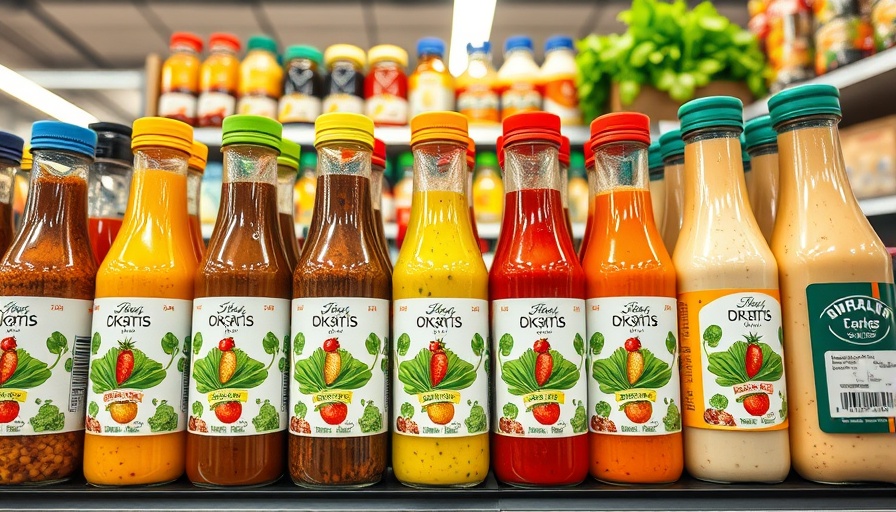
Is Your Salad Dressing Sabotaging Your Health?
A vibrant salad may seem like the perfect option for a healthful meal, but the dressing can turn this nutritious choice into a potentially harmful concoction. While salads are packed with fiber, vitamins, and antioxidants, many store-bought dressings contain additives that can significantly undermine these benefits.
Let’s dive deeper into what lurks within those innocent-looking bottles of dressing and explore healthier alternatives.
The Dirty Truth Behind Store-Bought Dressings
Commercial salad dressings can hide some alarming ingredients, many of which you might not expect. Here are five common culprits that could be sabotaging your health:
1. The White Lie: Titanium Dioxide
Titanium dioxide is a brightening agent found in various processed foods and cosmetic products. While it makes dressings look appealing, the International Agency for Research on Cancer (IARC) has classified it as a possible human carcinogen. French and European authorities have banned it from food due to safety concerns, yet in the United States, it remains a frequent ingredient, often sitting on supermarket shelves.
2. Artificial Colors with Real Consequences
Those vibrant artificial colors may look enticing, but they come with their own risks. Dyes such as Red 40 and Yellow 5 have been linked to behavioral issues in children, including hyperactivity and attention problems. They’re not only unnecessary but harming our little ones right under our noses.
3. The Sweet Deception: Sugar and Its Substitutes
Many store-bought dressings contain high-fructose corn syrup, a sweetener known for contributing to obesity and diabetes. Even so-called “sugar-free” options might be worse, as they often include artificial sweeteners like sucralose, leading to increased appetite and weight gain. Plus, most people end up using far more than the standard serving size, amplifying these negative effects.
4. Preservatives: The Hidden Dangers
To achieve longer shelf lives and intensify flavor, manufacturers often use preservatives that may disrupt hormones and increase cancer risks. Ingredients like sodium benzoate can be lurking in your favorite dressings without your knowledge, waiting to do harm while you enjoy your salad.
5. Flavor Enhancers: Not What They Seem
Flavor enhancers found in dressings can be just as detrimental. Take disodium inosinate, for instance. While it might boost the taste, it also poses health risks. Swapping these commercial dressings with healthier alternatives can greatly benefit your overall wellness.
Simple Fixes for Healthier Salads
Now that you know what to look out for, here are five easy fixes to help you avoid those harmful ingredients:
Create Your Own Dressing!
Making your dressing at home allows you total control over what goes into it. Try mixing olive oil, vinegar, lemon juice, and your favorite herbs. You can customize each dressing to suit your salad and dietary needs.
Use Fresh Ingredients
Incorporate fresh herbs and spices to enhance flavor without the artificial additives. Ingredients like fresh garlic, basil, or oregano can transform any dish!
Opt for Quality Over Quantity
When buying bottled dressings, choose brands that use natural ingredients and minimal processing. Look for products with a short ingredient list and avoid anything with extra preservatives.
Experiment with Nut-Based Dressings
Use nut-based liquids like tahini or almond butter as a creamy base for your dressings. These not only add flavor but also provide healthy fats and protein.
Go for Simple Vinegars
Try balsamic vinegar, apple cider vinegar, or red wine vinegar as a light dressing. These options provide tangy flavors without excessive additives.
Empower Yourself to Make Healthier Choices
By understanding what’s in your salad dressing and making informed choices, you can significantly improve your overall health and wellness. With simple changes, you can transform that salad from a potential health hazard to a powerhouse of nutrition!
 Add Row
Add Row  Add
Add 







Write A Comment